Complete Solutions to Practice Paper 2 of chapter PRACTICE PAPERS of Class 11 book with complete answers and questions
| Class 11 | PHYSICS |
| Chapter | PRACTICE PAPERS |
| NCERT FINGERTIPS | Practice Paper 2 |
| Number Of Questions | 50 |
| Academic Year | 2023-24 |
Four particles of masses m, 2m, 3m and 4m are arranged at the corners of a parallelogram with each side equal to a and one of the angle between two adjacent sides is `60^(@)`. The parallelogram lies in the x-y plane with mass m at the origin and 4 m on the x-axis. The centre of mass of the arrangement will be located at
View SolutionA body is moving under the action of two force `vec(F_(1)=2hati-5hatj` , `vec(F_(2)=3hati-4hatj` . Its velocity will become uniform under a third force `vec(F_(3)` given by.
View SolutionA particle of mass 0.1 kg is held between two rigid supports by two springs of force constant `8 N m^(-1) and 2 N m^(-1)`. If the particle is displaced along the direction of length of the springs, its frequency of vibration is
View SolutionWhat is the wavelength of wave shown in given figure ?
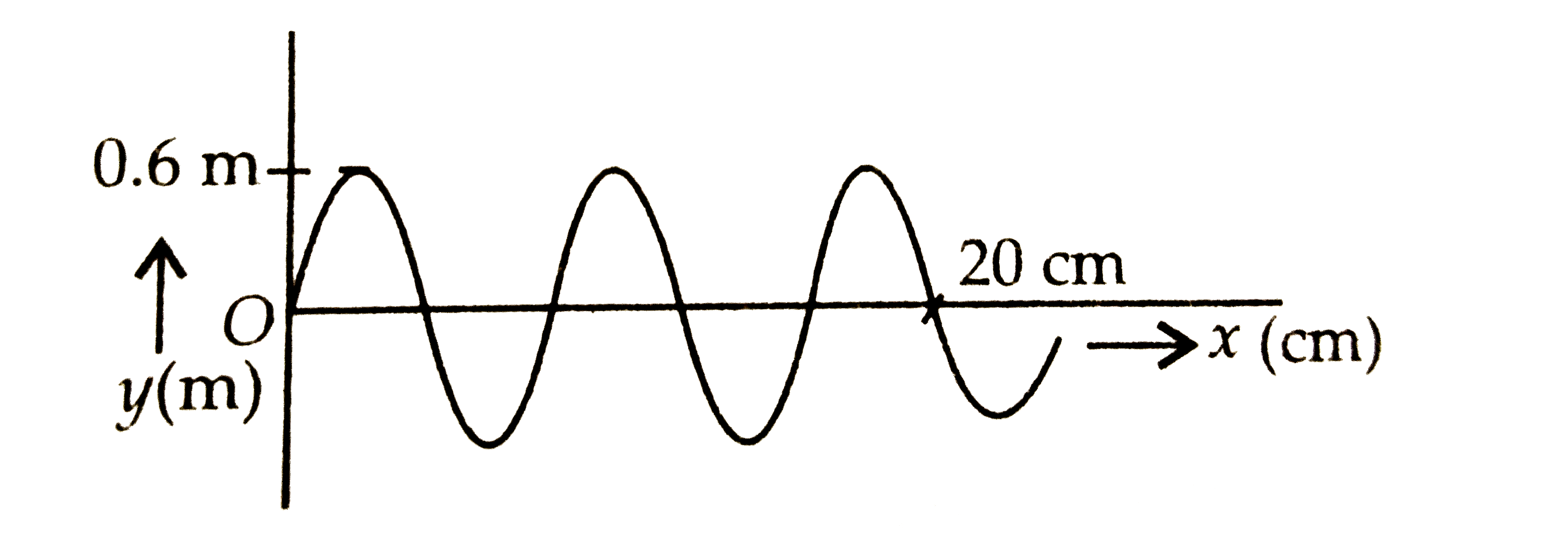
View SolutionA gas under constant pressure of `4.5 xx 10^(5) Pa` when subjected to `800 kJ` of heat, changes the volume from `0.5 m^(3) to 2.0 m^(3)`. The change in internal energy of the gas is
View SolutionA wave is represented by the equation
`y=0.1 sin (100pit-kx)`
If wave velocity is `100 m s^(-1)`, its wave number is equal to
View SolutionA sound source is moving towards a stationary observer with 1/10 of the speed of sound. The ratio of apparent to real frequency is
View SolutionIf `E , M , J , and G` , respectively , denote energy , mass , angular momentum , and gravitational constant , then `EJ^(2) //M^(5) G^(2)` has the dimensions of
View SolutionTwo cars travelling towards each other on a straight road at velocity `10 m//s` and `12 m//s` respectively. When they are 150 metre apart, both drivers apply their brakes and each car decelerates at `2 m//s^(2)` until it stops. How far apart will they be when they have both come to a stop?
View SolutionA particle is projected vertically upwards and it reaches the maximum height H in time T seconds. The height of the particle at any time t will be-
View SolutionIf a body placed at the origin is acted upon by a force `vecF=(hati+hatj+sqrt2hatk)`, then which of the following statements are correct?
Magnitude of `vecF` is (2+ `sqrt2`)
Magnitude of `vecF` is 2.
`vecF` makes an angle of `45^@` with the Z-axis
`vecF` makes an angle of `30^@` with the Z-axis.
Select the correct answer using the codes given below
View SolutionA particle is projected from the ground with an initial speed `v` at an angle `theta` with horizontal. The average velocity of the particle between its point of projection and highest point of trajectory is `[EAM 2013]`
View SolutionA block of mass 2 kg is placed on the floor. The coefficient of static friction is 0.4. A force F of 3 N is applied on the block as shown in figure. The force of friction between the block and the floor is (Take `g=10 m s^(-2)`)

View SolutionA block released from rest from the top of a smooth inclined plane of angle `theta_1` reaches the bottom in time `t_1`. The same block released from rest from the top of another smooth inclined plane of angle `theta_2` reaches the bottom in time `t_2` If the two inclined planes have the same height, the relation between `t_1 and t_2` is
View SolutionA ball , moving with a speed of `10 sqrt(3) m//s` , strikes an identical stationary ball such that after the collision , the direction of each ball makes an angle of `30^(@)`with the original line of motion. The speeds of two balla after the collision are , respectively.
View SolutionA force F is related to the position of a particle by the relation `F=(10x^(2))N` . Find the work done by the force when the particle moves from `x=2m to x=4m`.
View SolutionTwo particles of masses 1 kg and 3 kg have position vectors `2hati+3hatj+4hatk and-2hati+3hatj-4hatk` respectively. The centre of mass has a position vector
View SolutionTwo thin discs each of mass M and radius r metre are attached to form a rigid body as shown in figure. The rotational inertia of this body about an axis perpendicular to the plane of disc B and passing through its centre is

View SolutionTwo satellites are revolving around the earth in circular orbits of same radii. Mass of one satellite is `100` times that of the other. Then their periods of revolutions are in the ratio
View SolutionThe increase in length of a wire on stretching is 0.025%. If its Poisson's ratio is 0.4, then the percentage decrease in diameter is
View SolutionA planet is revolving in an elliptical orbit around the sun. Its closest distance from the sun is r and the farthest distance is R. If the velocity of the planet nearest to the sun be v and that farthest away from the sun be V. then v/V is
View SolutionA block of wood weighs 12 kg and has a relative density 0.6. It is to be in water with 0.9 of its volume immersed. What weight of a metal is needed if the metal is on the top of wood ? [Relative density of metal = 14]
View SolutionThe mean distance between the atoms of iron is `3xx10^(-10)` m and interatomic fore constant for iron is `7 N//m`. The Young's modulus of elasticity for iron is
View SolutionAn ice cube of mass 0.1 kg at `0^@C` is placed in an isolated container which is at `227^@C`. The specific heat s of the container varies with temperature T according to the empirical relation `s=A+BT`, where `A= 100 cal//kg.K and B = 2xx 10^-2 cal//kg.K^2`. If the final temperature of the container is `27^@C`, determine the mass of the container.
(Latent heat of fusion for water = `8xx 10^4 cal//kg`, specific heat of water `=10^3 cal//kg.K`).
View SolutionA cyclic process is shown in the figure. Work done during the cyclic process ABCDA is

View SolutionOne mole of an ideal monoatomic gas at temperature `T_0` expands slowly according to the law `p/V` = constant. If the final temperature is `2T_0`, heat supplied to the gas is
View SolutionA simple pendulum has time period (T_1). The point of suspension is now moved upward according to the relation `y = K t^2, (K = 1 m//s^2)` where (y) is the vertical displacement. The time period now becomes (T_2). The ratio of `(T_1^2)/(T_2^2)` is `(g = 10 m//s^2)`.
View SolutionA stone is thrown horizontally with velocity u. The velocity of the stone 0.5 s later is 3u/2. The value of u is
View SolutionThe dimension of the quantity `1/epsilon_0 e^2/(hc)` is (e charge of electron,h Planck's constant and c=velocity of light)
View SolutionA projectile is thrown with an initial velocity of `(a hati +b hatj) ms^(-1)`. If the range of the projectile is twice the maximum height reached by it, then
View SolutionA uniform wire of length 20 m and weighing 5 kg hangs vertically. If `g=10 m s^(-2)`, then the speed of transverse waves in the middle of the wire is
View SolutionThe velocity of a body moving in a vertical circle of radius r is `sqrt(7gr)` at the lowest point of the circle. What is the ratio of maximum and minimum radius r is tension?
View SolutionFigure shows position and velocities of two particles moving under mutual gravitational attraction in space at time `t = 0`. The position of centre of mass after one second is
`'"*"'m`. Fill `"'*"'`.
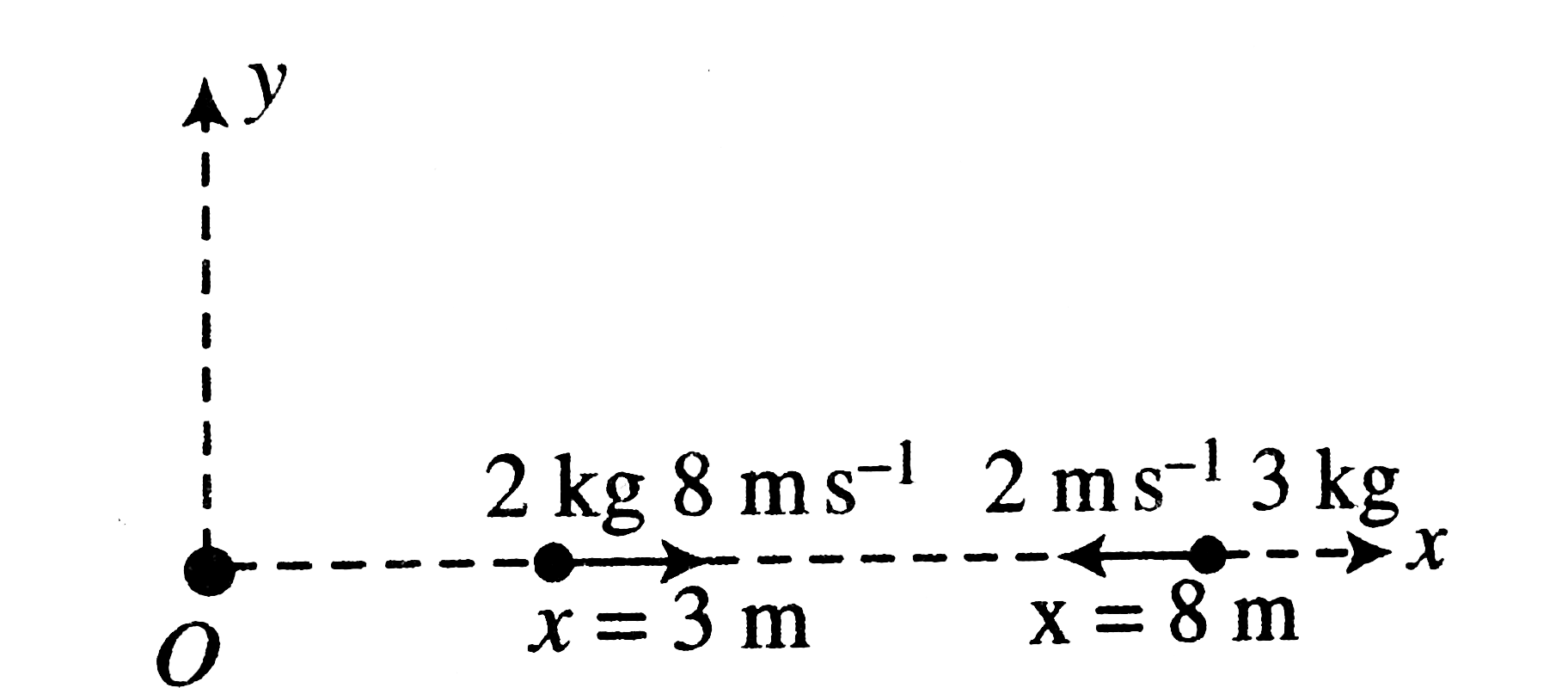
View SolutionHow large must F be in the figure shown to give the 700 g block an acceleration of `30 cm s^(-2)` ? The coefficient of friction between all surfaces is 0. 15.
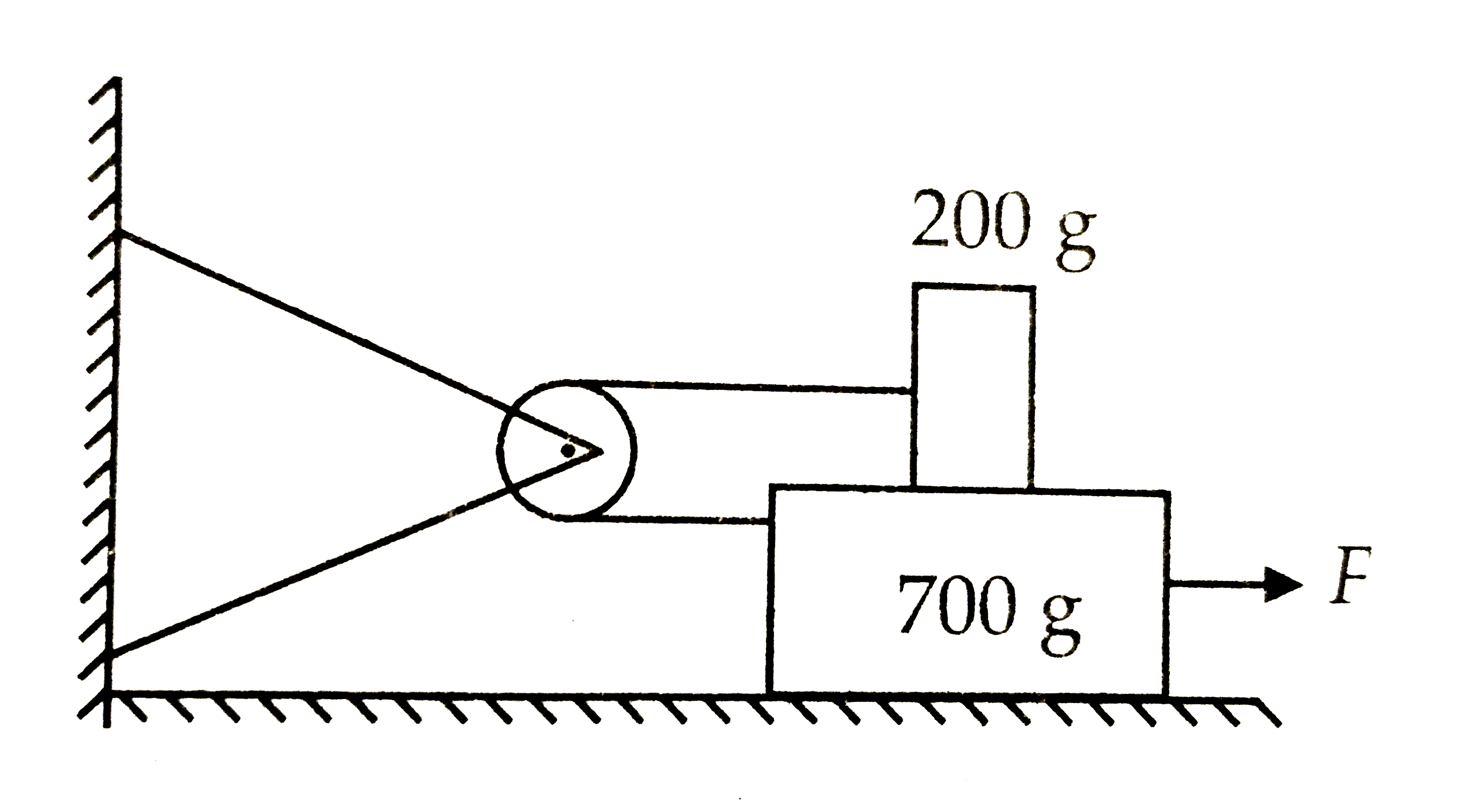
View SolutionThe radii of the two columne is U-tube are `r_(1)` and `r_(2)(gtr_(1))`. When a liquid of density `rho` (angle of contact is `0^@))` is filled in it, the level different of liquid in two arms is h. The surface tension of liquid is
`(g=` acceleration due to gravity)
View SolutionThe angle subtended by vector `vecA = 4 hati + 3hatj + 12hatk` with the x-axis is :
View SolutionA solid cylinder rolls without slipping down a `30^@` slope. The minimum coefficient of friction needed to prevent slipping, will be
View SolutionThe equation of state for 5 g of oxygen at a pressure P and temperature T, when occupying a volume V, will be
View SolutionA weightless spring of length 60 cm and force constant `100 N m^(-1)` is kept straight and unstretched on a smooth horizontal table and its ends are rigidly fixed. A mass of 0.25 kg is attached at the middle of the spring and is slightly displaced along the length. The time period of the oscillation of the mass is
View SolutionA particle is executing simple harmonic motion of amplitude 5 cm and period 6 s. How long will it take to move from one end of its path on one side of mean position to a position 2.5 cm on the same side of the mean position ?
View SolutionThe `P-V` diagram of a gas undergoing a cyclic process ABCDA is shown in (figure). Where `P` is in `N//m^(2)` and `V` is in `cm^(3)`. Identify the incorrect statement
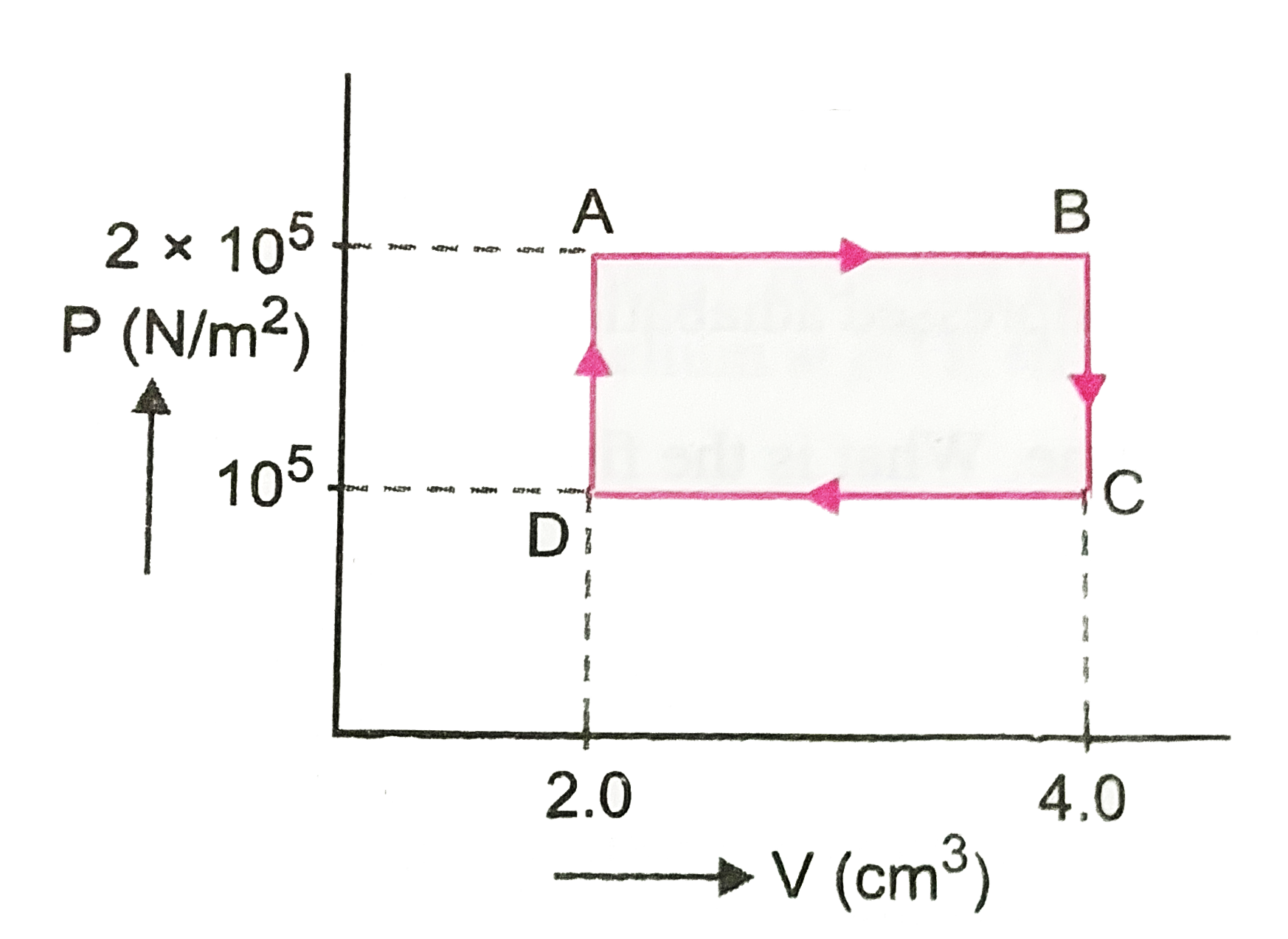
View SolutionThree stars `A, B, C` have surface temperatures `T_(A), T_(B)` and `T_(C)`. A appaears bluish, B appears reddish and C appears yellowish. We can conclude that
View SolutionA body of mass m accelerates uniformly from rest to `v_1` in time `v_2`. As a function of time t, the instantaneous power delivered to the body is
View SolutionA solid sphere of uniform density and radius `R` applies a gravitational force of attraction equal to `F_(1)` on a particle placed at `P`, distance `2R` from the centre `O` of the sphere. A spherical cavity of radius `R//2` is now made in the sphere as shown in figure. The particle with cavity now applies a gravitational force `F_(2)` on same particle placed at `P`. The radio `F_(2)//F_(1)` will be
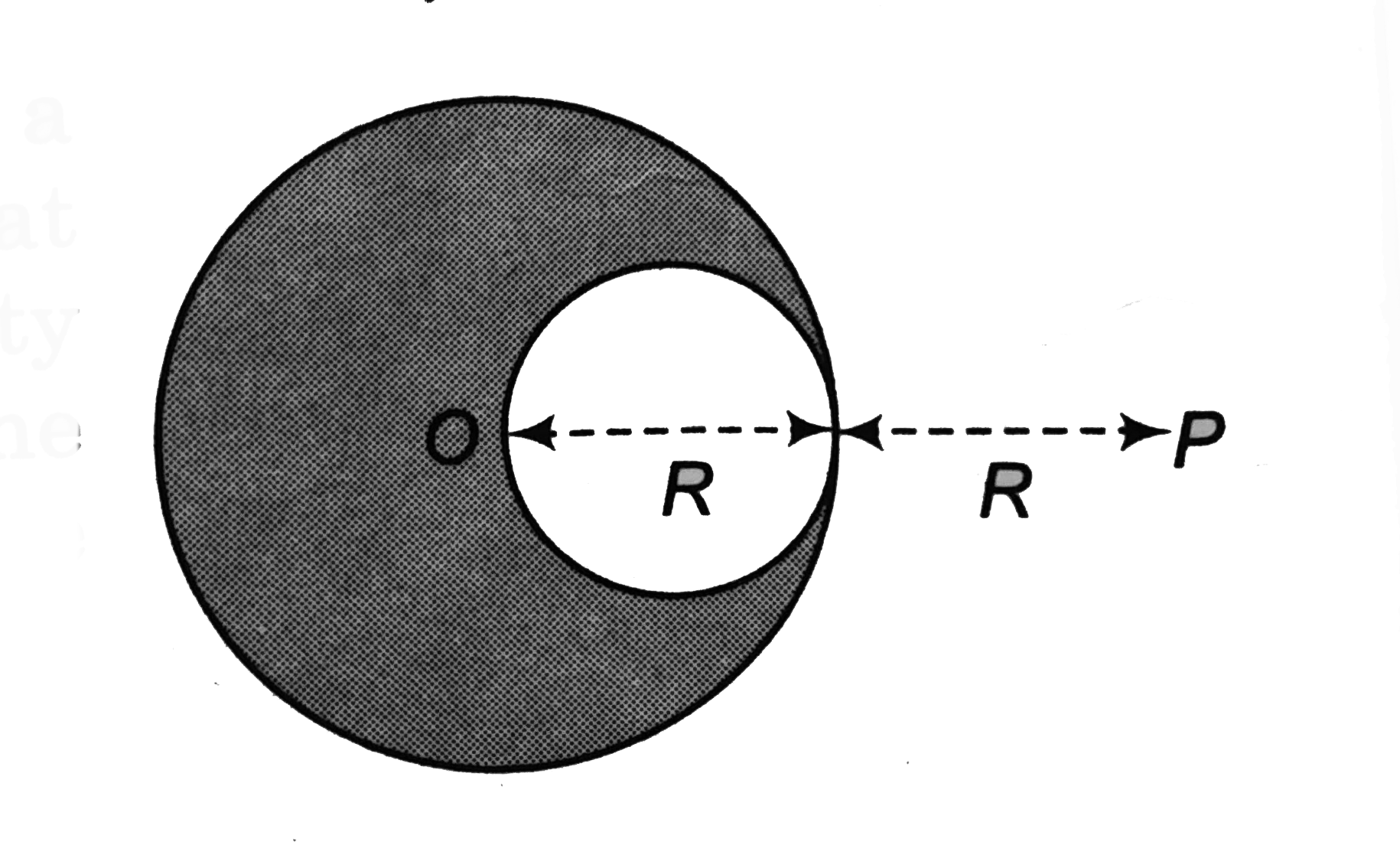
View SolutionA metal wire of length `L_1` and area of cross section A is ttached to a rigid support. Another metal wire of length `L_2` and of the same cross sectional area is attached to the free end of the first wire. A body of mass M is then suspended from the free end of the second wire, if `Y_1` and `Y_2` are the Young's moduli of the wires respectively the effective force constant of the system of two wires is
View SolutionThe average degrees of freedom per molecule for a gas are 6. The gas performs `25 J` of work when it expands at constant pressure. The heat absorbed by gas is
View SolutionA thin circular ring of mass M and radius r is rotating about its axis with a constant angular velocity `omega`, Two objects, each of mass m, are attached gently to the opposite ends of a diameter of the ring. The wheel now rotates with an angular velocity `omega=`
View SolutionA bus is moving with a speed of `10 ms^-1` on a straight road. A scooterist wishes to overtake the bus in `10 s`. If the bus is at a distance of `1 km` from the scooterist with what speed should the scooterist chase the bus ?
View SolutionA particle `A` is projected verically upwards. Another indentical particle `B` is projected at an angle of `45^(@)`. Both reach the same height. The ratio of the initial kinetic energy of `A` to that of `B` is `-`
View SolutionA car is initially at rest, 330 m away from a stationary observer. It begins to move towards the observer with an acceleration of `1.1 m s^(-2)` sounding its horn continuously. 20 s later, the driver stops sounding the horn. The velocity of sound in air is `330 m s^(-1)`. The observer will hear the sound of the horn for a duration of
View Solution
Practice Paper 2 questions and complete solutions for chapter PRACTICE PAPERS of NCERT FINGERTIPS PHYSICS (HINGLISH) of Class 11